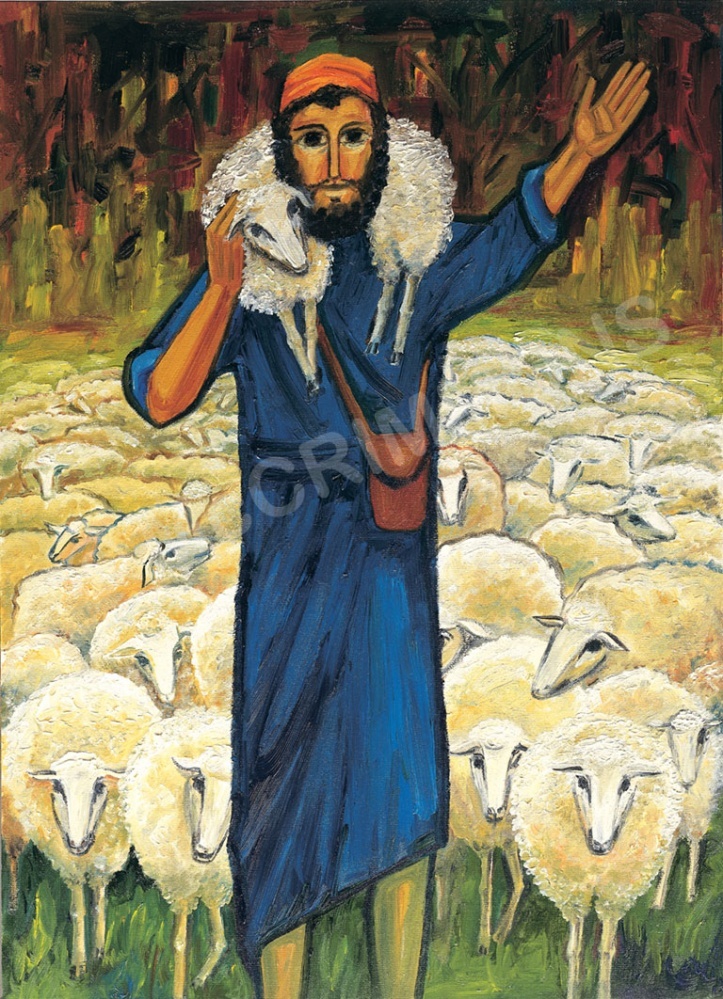Artwork
by the Benedictine Sisters of Turvey Abbey
December 20th: 'O Key of David, and sceptre of the house of
Israel, who open and none may close, who close and none may open, come and bring
out of prison the captive who sits in darkness and the shadow of death.'
'O Clavis David, et sceptrum domus
Israel:
qui aperia, et nemo claudit; claudis. et nemo aperit:
veni, et edu vinctum de domo carceris,
sedentem in tenebris et umbra mortis.'
The text is based on Revelation 3:7, recalling Isaiah 22:20-22 and 42:7. For
the Jewish people the key or sceptre of David was depicted as a 6-pointed star,
which was a symbol of God and of the Messiah. A clear reference of this is
found in Numeri 24:17, and in the star which led the Magi to Bethlehem (Matthew
2:2).
The key, the sceptre, the star is Christ who through his death and resurrection
opened the gates of hell. The banner is based on the Eastern 'Anastasis',
showing Christ victoriously rising from the tomb, trampling the gates of death
underfoot and pulling Adam and Eve out of their graves, and with them the whole
human race.
The O
Antiphons are a highlight of the Church's Advent Liturgy: from December 17th -
23rd they frame the Magnificat at Vespers.
Rich in symbolism and meaning they
take us right from the beginning of creation, through the centuries of the
world's waiting for the promised Messiah, calling upon him who was hidden in
signs and symbols, and revealed when the fullness of time had come, leading us
to the Mystery of the Incarnation and beyond, to the Paschal Mystery, the
coming of the Holy Spirit and the Parousia (Christ's second coming).
The exact origin of the Latin texts
is unknown. They may date from the sixth century. There is evidence to suggest
that the texts were in liturgical use in Rome in the eighth century. Both the
original Latin texts and an English translation are given here.
Arriving at the 7th Antiphon on
December 23rd, we may discover that the letters of the Latin invocations, read
from the last up to the first, form a wonderful acrostic (ERO CRAS), like God's
answer to our prayer:
Dec. 17: Sapienta (O Wisdom)
Dec. 18: Adonai (O Adonai [Lord])
Dec. 19: Radix Jesse (O Root of Jesse)
Dec. 20: Clavis David (O Key of David)
Dec. 21: Oriens (O Rising Sun)
Dec. 22: Rex Gentium (O King of the Nations)
Dec. 23: Emmanuel (O Emmanuel)
ERO
CRAS: I WILL BE HERE TOMORROW
Christmas: O Wonderful Exchange (Antiphon
from the Greek Liturgy "O Wonderful Exchange! The Creator of the human
race took to himself a human body and was born of a virgin, and becoming man he
granted us divinity.")
Click here to view all 8
images in greater detail (opens in new window).
Wall Hanging Banner: Dye sublimation printing on a 100% close weave,
natural feel polyester material with dowling, tulip wood end caps and gold
effect hanging cord. Fire retardant: BS5867/Type B DIN4102. An extra
depth of approx. 12" should be allowed when measuring to allow for the
hanging cord. A sample of the material can be supplied upon request.
*On orders of 3 of more wall hanging banners, from our extensive range,
a 10% discount will be applied at time of invoice.
Delivery: Please allow 10–14 days from date of order.






